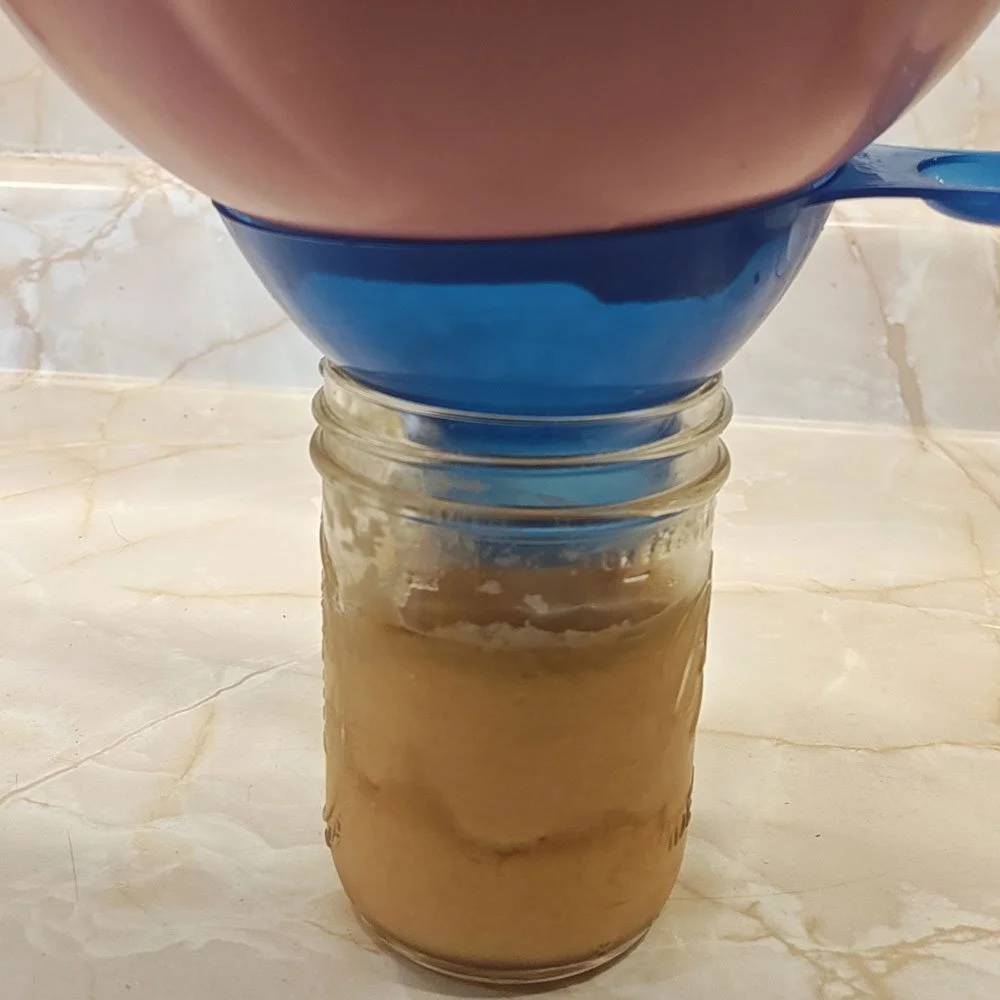Paw Paws
Paw paws are the decadent, tropical-tasting relatives of cherimoyas and soursops, and they grow in temperate forests. Their flavor dances somewhere between banana, mango, and melon, and their rich golden pulp is full of vitamins, minerals, and a unique kind of sweetness that feels like a gift from the understory.
These small trees thrive in shady woodlands and are beloved in permaculture circles. As the days shorten toward the fall equinox, paw paws begin to drop their fruit — and that’s our sign to harvest!
Harvesting & Handling Paw Paws Safely
In my early days foraging for paw paws, I cherished every bit so much that I’d peel pulp off the seeds with a butter knife, refusing to waste a drop. It was slow, sticky work — a kind of fruit meditation — but it’s not a method I recommend.
Here’s why: While the fruit is nourishing, the seeds are powerfully emetic — meaning they can cause serious vomiting if ingested.
Using a silicone spatula and colander is a safe, easy method for extracting pulp I now teach on foraging walks and recommend to anyone working with paw paws at home.
Safe Paw Paw Processing
Harvest only when ripe. Paw paws are best when they’ve fallen naturally — soft to the touch but still mostly green.
Rinse to remove debris. Gently wash the fruit to get rid of any dirt or forest matter.
Squeeze and strain. Over a bowl with a fine-mesh colander, squeeze the fruit with clean hands, separating the seeds and pulp from the skin.
Stir with a silicone spatula. This helps filter the pulp while leaving the seeds behind.
Compost the skins and seeds. They’ve served their purpose. (Or, guerrilla garden the seeds on the neglected fringe of a public park or trail to contribute to future harvests.)
You’ll lose a small amount of pulp that clings to the seeds, but it’s a worthy trade for safety and peace of mind.
A canning funnel and mason jar make it easy to harvest paw paws for storage.
How to Enjoy Paw Paws
There are plenty of internet recipes out there — paw paw bread, custards, puddings, and dehydrated paw paw fruit leather. I’ve played with many of them. But my favorite way to eat paw paws is the simplest:
Cold, by the spoonful.
Chill the pulp in the fridge and eat it fresh, one golden bite at a time. It’s soft, creamy, and deeply satisfying — nature’s dessert with no embellishment needed.
In fact, there’s reason to be cautious with cooking and drying pawpaws. That extra processing can concentrate toxins that are present in the fruit.
Freezing Paw Paws (The Right Way)
If you’re lucky enough to have more than you can eat fresh (it happens!), freeze the pulp in silicone butter trays or ice cube molds. Once frozen solid, transfer the blocks into an airtight freezer bag, and press out as much air as possible. Paw paw pulp will oxidize even in the freezer if it’s exposed to air, which can make it bitter over time.
Label it, date it, and save it for mid-winter — when a taste of it feels like medicine.
Final Note
With care and a little know-how, paw paws can become one of the most rewarding wild foods to forage. And once you’ve tasted them — truly ripe — you’ll understand why people have cherished these fruits for generations.
The trees grow into prolific colonies. Beyond their use in supply food, the trees have great value in providing thickets of straight wood for craftwork and construction as part of a mature forest garden or permaculture landscape.



